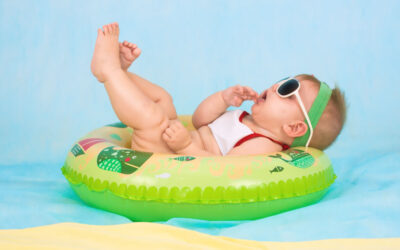Disclaimer: I'm an Amazon affiliate. This means if you snag a purchase, Amazon might toss me a coin or two all while keeping your wallet intact.
Amazon Prime's speedy same day or next day delivery is my lifeline. And Amazon's got it's share of steals. But if you have the time and energy to shop around, you might find some of these toys at your local shops as well. Happy hunting!
G’day, Aussie parents! Whether you’re a first-time mum or a seasoned dad, the world of nappies can be a tad overwhelming. From cloth to disposable and everything in between, there’s a nappy for every bum! So, let’s roll up our sleeves (and maybe grab a cuppa) as we dive into the diverse world of nappies down under.
Types of Nappies
Disposable Nappies
The go-to choice for many Aussie families, disposable nappies are convenient, absorbent, and fuss-free. They come in various sizes, from newborn to toddler, ensuring a snug fit for every stage.
Pros:
- Convenient for outings and travel.
- Quick and easy disposal.
- Modern designs with wetness indicators.
Cons:
- Environmental impact due to non-biodegradable materials.
- Ongoing cost as they’re not reusable.
‘Little One’ nappies from woollies and ‘Cub’ by Coles are great affordable options. Some also swear by the Aldi nappies but I didn’t like them as much because they felt a little bit plasticky. Huggies is also a great brand when it comes to disposables. Keep an eye out for Nappy deals on Amazon. Especially on special events like Amazon Prime Day, Black Friday, Cyber Monday and Boxing day. You may be able to buy Huggies or other name brands for the same price as the Coles and Woolies nappies.
Cloth Nappies
A sustainable option that’s gaining traction among eco-conscious parents. Cloth nappies are washable, reusable, and often come in vibrant designs.
Pros:
- Environmentally friendly.
- Cost-effective in the long run.
- Breathable and less likely to cause nappy rash.
Cons:
- Requires regular washing.
- Initial investment can be higher.
- Not as absorbent as some disposable counterparts.
For more information on types of cloth nappies and the best brands to buy in Australia visit my post “Cloth Nappies Unveiled: Types and Top Picks for Aussie Bubs“.
Swim Nappies
Perfect for beach days or pool splashes, swim nappies are designed to contain any accidents while allowing your little one to enjoy the water. These nappies can be disposable or reusable.
Pros:
- Prevents accidents in the pool.
- Reusable options available.
Cons:
- Not designed for long-term wear.
- Needs to be replaced if soiled.
Big Softies is a good affordable reusable swim nappy. If you’re after a eco friendly disposable nappy, try the Tooshies nappies. And for a disposable nappy, try the Huggies Little Swimmers range.
Training Pants
As your bub transitions from nappies to toilet training, training pants offer a middle ground. They’re more absorbent than regular undies but feel like a step towards independence. Saying that, you can also get disposable training nappys too.
Pros:
- Encourages self-awareness during toilet training.
- Pull-up designs for easy removal.
Cons:
- Less absorbent than regular nappies.
- Can be pricier than standard options.
MooMoo Baby is a great reusable training underwear. Pampers Easy Up range is a very cost effective option for disposable training nappies. For a eco friendly option, go for the Eco by Naty Brand.
Biodegradable Nappies
A middle ground between disposables and cloth, biodegradable nappies are designed to break down more quickly than traditional disposables.
Pros:
- Reduced environmental footprint.
- Available in various sizes and styles.
Cons:
- May still have a significant environmental impact compared to cloth.
- Availability and cost can vary.
There are a few brands I like when it comes to biodegradable nappies. I find deals on Amazon and rotate between them. I was able to catch a deal for the Honest Company Nappies on Prime day and have subscribed to them for now. I also love Tooshies and Ecoriginals brands.
Tips for Choosing the Right Nappy:
Fit Matters: Ensure the nappy fits snugly but isn’t too tight. Check for signs of discomfort or redness.
Consider Absorbency: For overnight or longer outings, opt for nappies with higher absorbency.
Environmental Impact: If sustainability is a priority, explore eco-friendly options or consider a mix of cloth and disposable.
In conclusion, the world of nappies offers a myriad of choices tailored to fit every family’s needs and preferences. Whether you’re prioritising convenience, sustainability, or affordability, there’s a nappy out there with your bub’s name on it. Happy nappy hunting, mates!





0 Comments